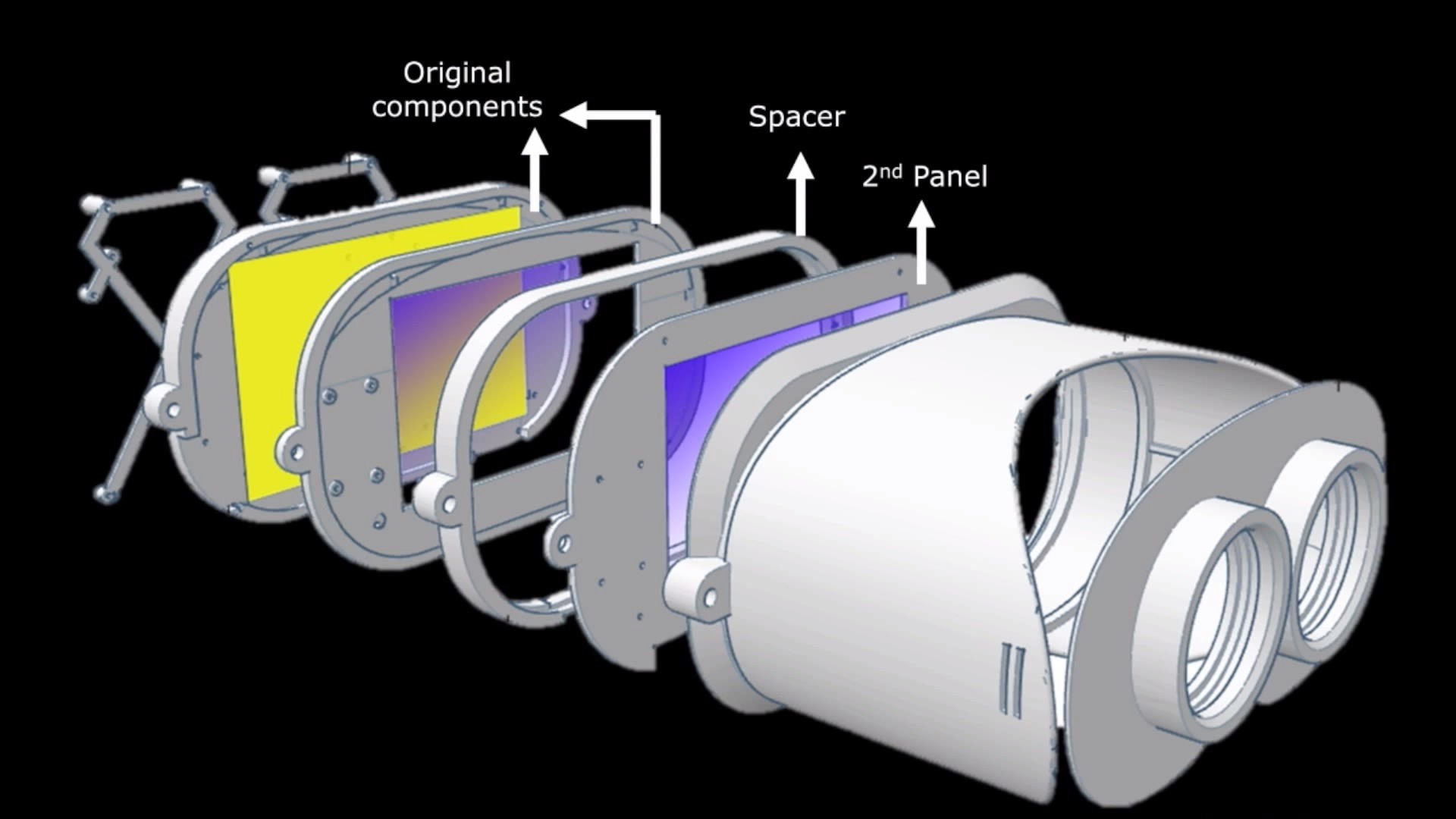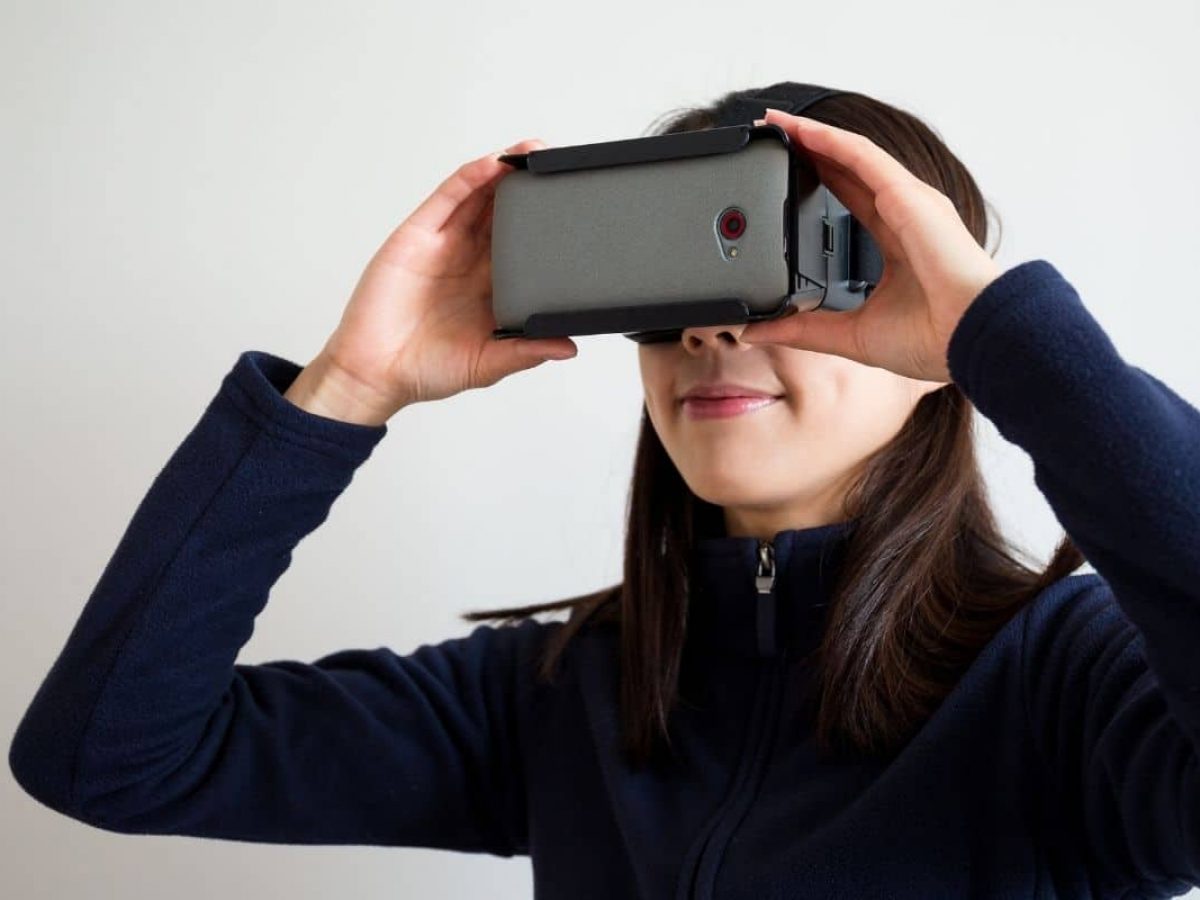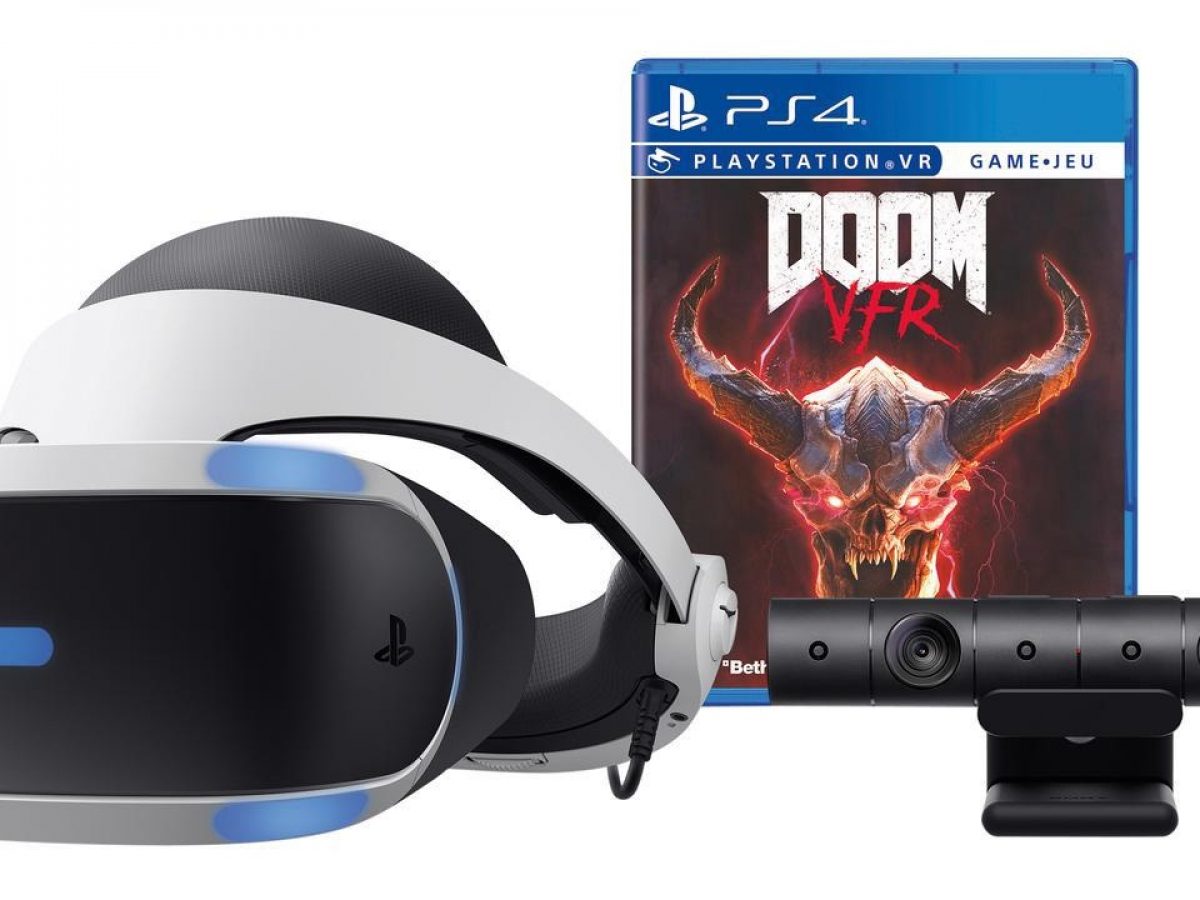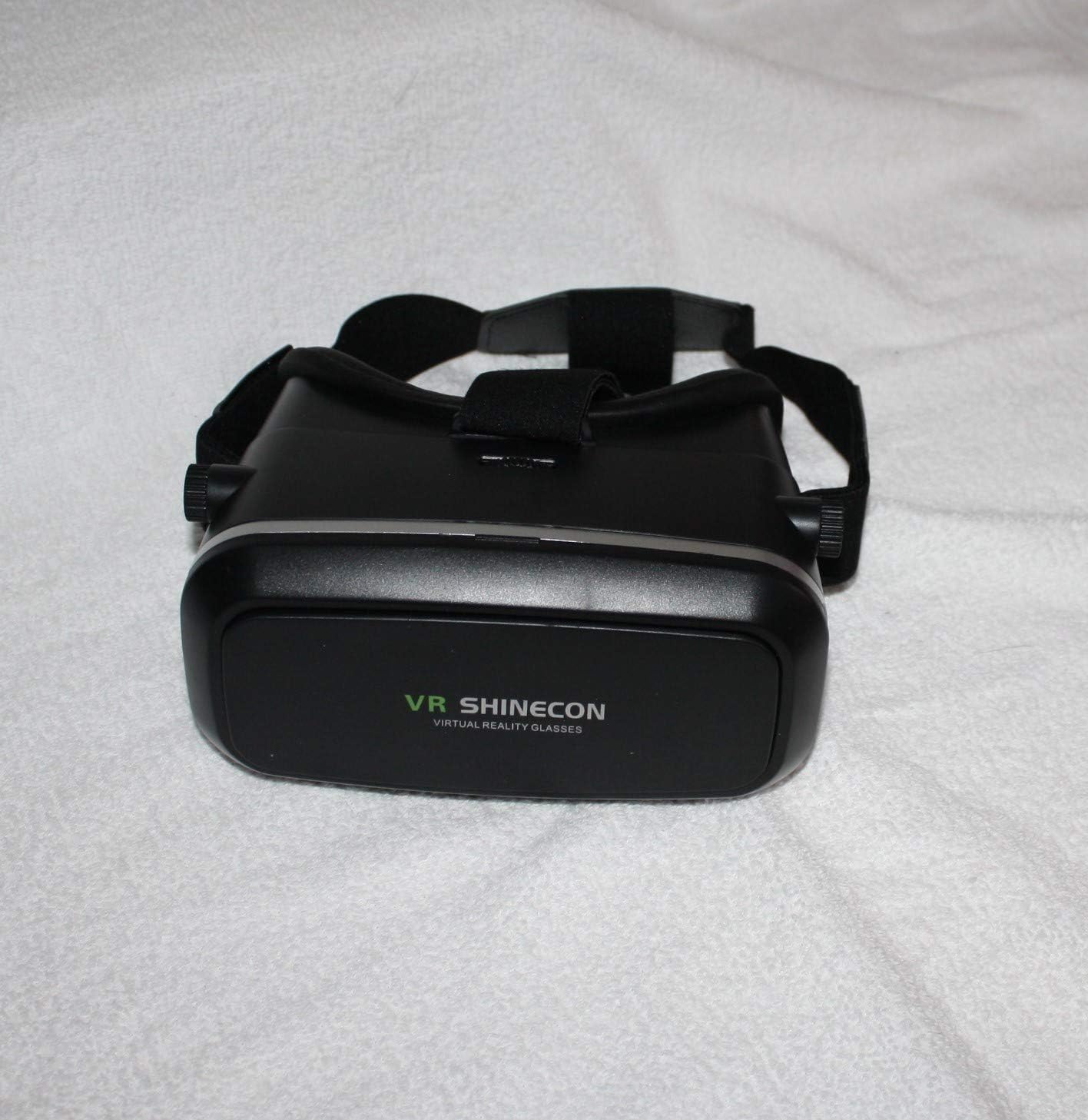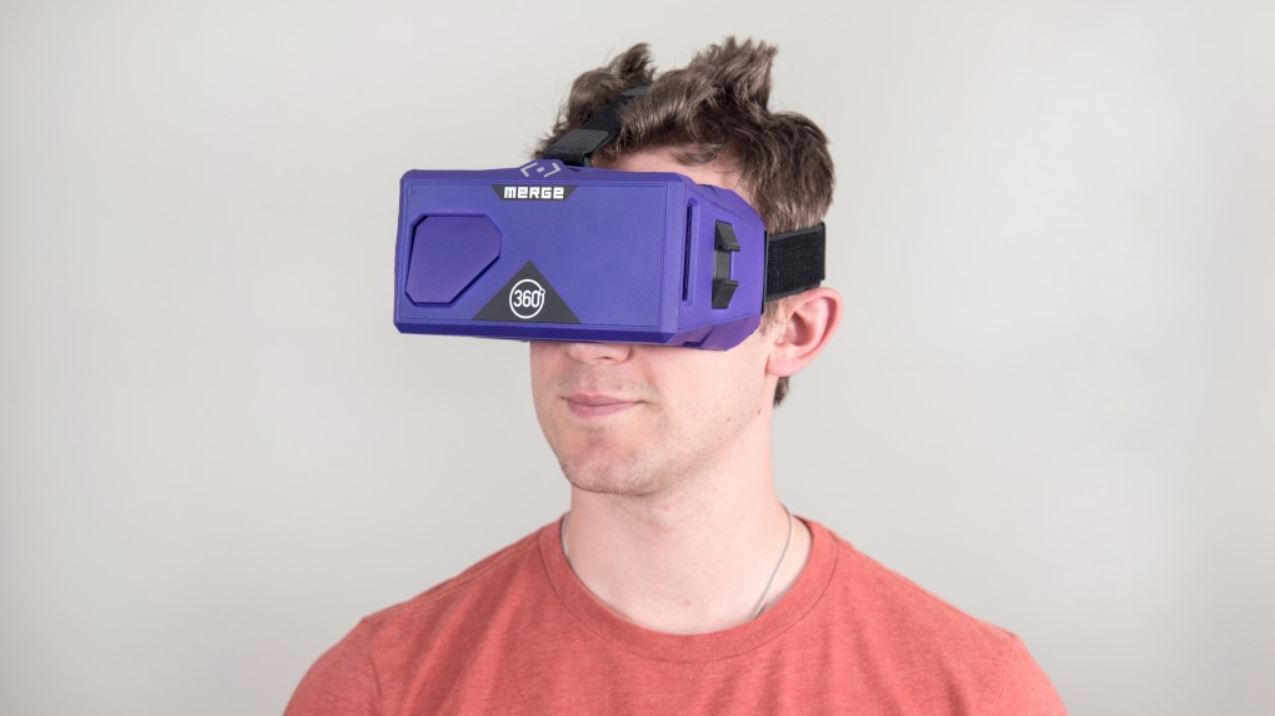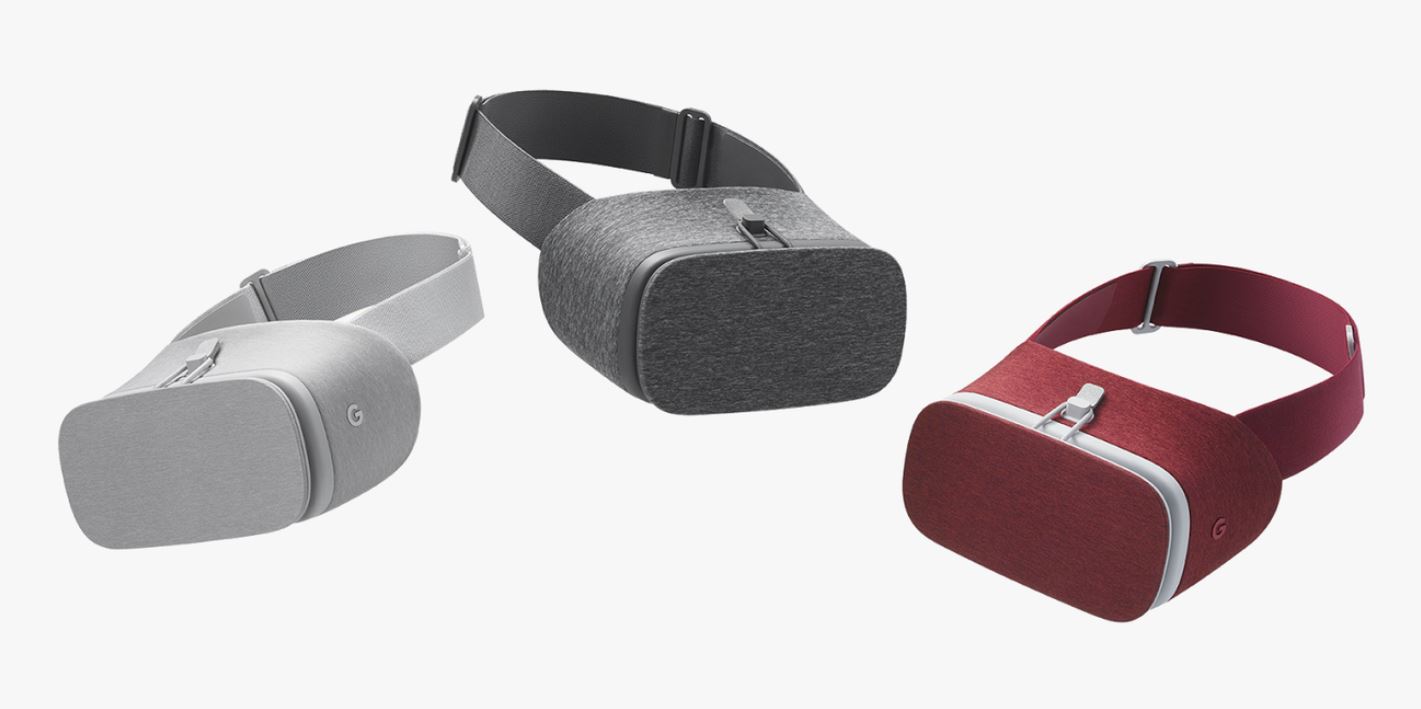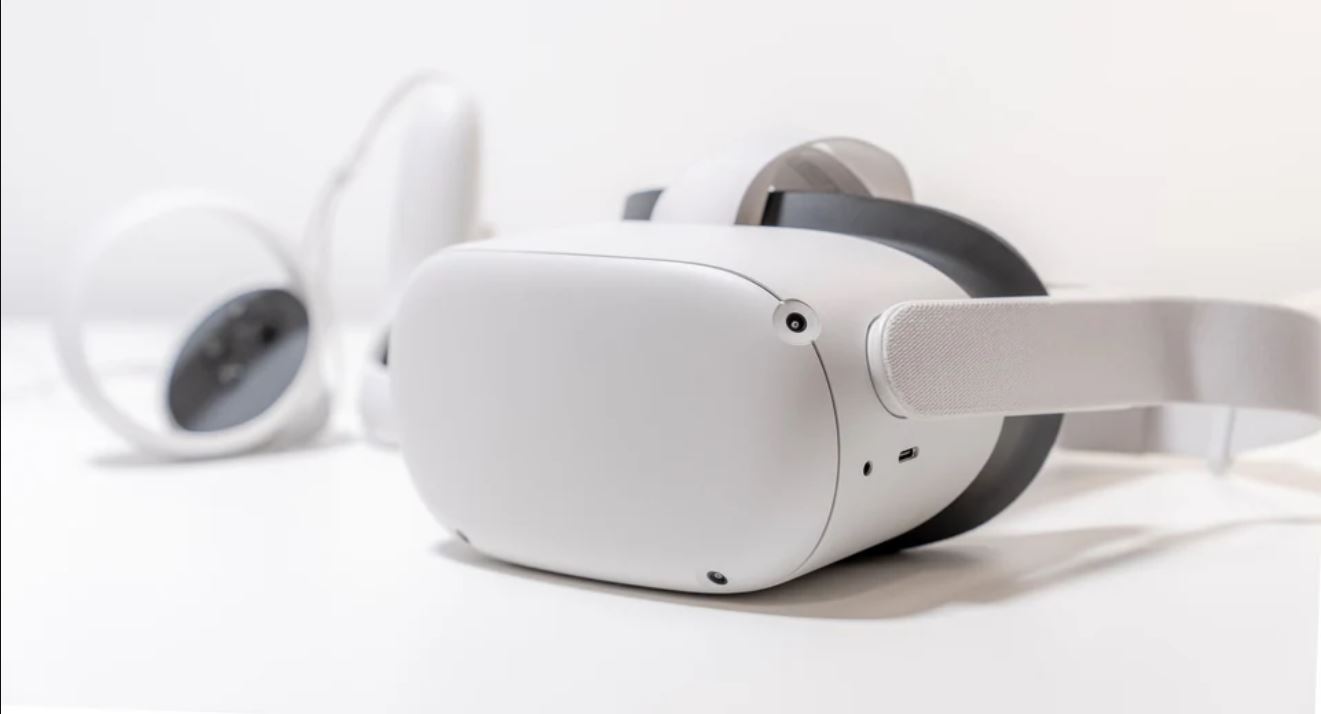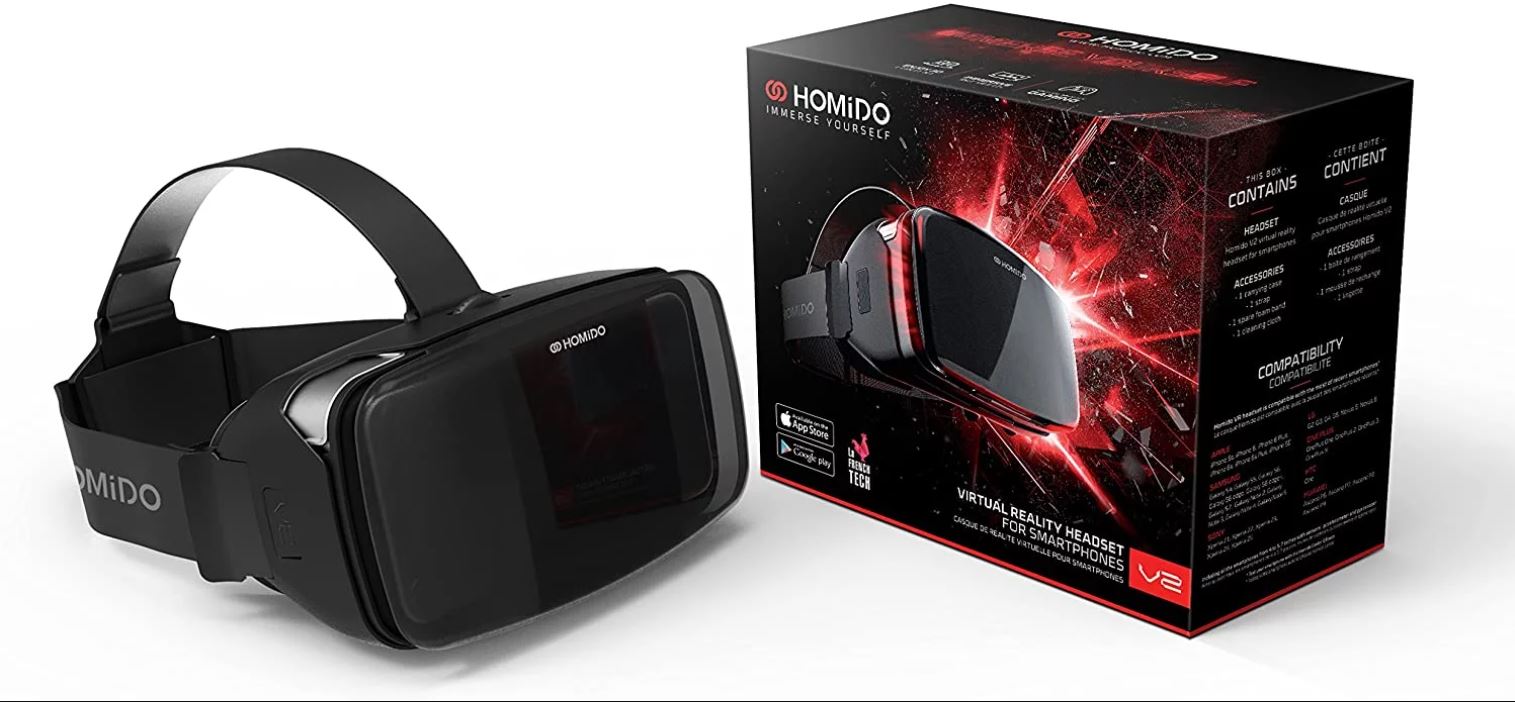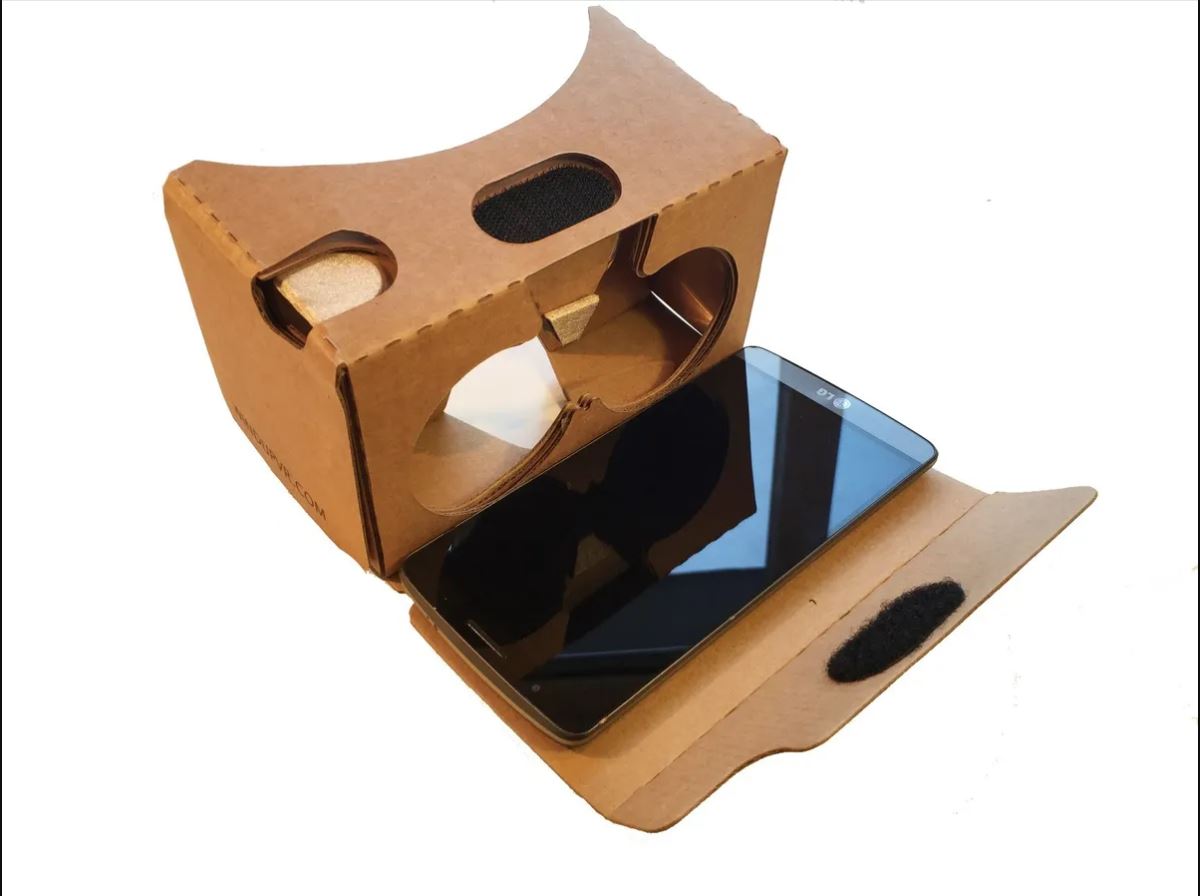Introduction
Virtual Reality (VR) technology has made significant advancements in recent years, revolutionizing the way we experience digital content. From immersive gaming experiences to virtual travel adventures, VR headsets have become a popular accessory for tech enthusiasts worldwide.
But have you ever wondered how these VR headsets actually work? How do they transport us to virtual worlds and make us feel like we’re truly part of the action? In this article, we’ll delve into the fascinating world of VR headsets and explore the technology behind them.
At its core, VR is a simulated experience that can be similar to or completely different from the real world. It creates an environment that is immersive and interactive, allowing users to explore and interact with computer-generated 3D environments in a seemingly real way.
The main goal of a VR headset is to trick our senses into believing that we are present in a virtual environment. It achieves this by using a combination of display technology, motion tracking, audio output, and input devices.
Throughout this article, we’ll take a closer look at each of these components and how they contribute to the overall VR experience. We’ll discuss the display technology that helps create realistic visuals, the motion tracking systems that track our movements, the audio output that provides surround sound, the input devices that allow us to interact with the virtual world, and the software and content that bring it all together.
We’ll also explore how VR headsets can be connected to computers or consoles to access more powerful processing capabilities and discuss how they can work together with our smartphones to offer portable VR experiences.
So, if you’ve ever been curious about the inner workings of VR headsets and how they transport us to virtual worlds, keep reading as we unravel the technology that powers this immersive experience.
The Basics of Virtual Reality
Before diving into the intricate details of how VR headsets work, it’s important to understand the fundamental concepts behind virtual reality. At its core, virtual reality is a simulated experience that can be similar to or entirely different from the real world.
The primary goal of virtual reality is to create an immersive and interactive environment that engages our senses and makes us feel like we are physically present in a different reality. This is achieved through the use of various technologies and techniques that trick our brain into perceiving the virtual environment as real.
One of the key elements of virtual reality is the concept of immersion. Immersion refers to the feeling of being fully absorbed in the virtual world, disconnecting from the physical surroundings. To achieve this, VR headsets typically have a wide field of view that covers a significant portion of our vision, cutting off distractions from the outside world.
In addition to immersion, another essential aspect of virtual reality is interactivity. The ability to interact with the virtual environment and have it respond to our actions enhances the sense of realism and engagement. This is typically facilitated through the use of controllers, cameras, or specialized gloves that track our movements and translate them into actions within the virtual space.
Virtual reality also relies heavily on spatial audio, which plays a crucial role in creating an immersive experience. Spatial audio provides a sense of direction and proximity for sound, enhancing the realism of the virtual environment. This means that sounds will appear to come from specific locations in the virtual world, just as they would in the real world.
Another important concept in virtual reality is presence. Presence refers to the feeling of truly being in the virtual environment, as if it were a physical space. Achieving a high level of presence is a significant challenge in VR technology since any inconsistencies or delays in responding to our actions can break the illusion and disrupt the user experience.
Overall, virtual reality provides a unique and exciting way to experience digital content. By leveraging cutting-edge technologies and techniques, VR headsets transport us to new worlds and allow us to immerse ourselves in captivating experiences. In the next sections, we’ll explore the components and technology that make this possible, shedding light on how VR headsets work and deliver such incredible experiences.
The Components of a Virtual Reality Headset
A virtual reality headset is a sophisticated piece of technology that combines several components to create an immersive virtual experience. Understanding these components is key to comprehending how VR headsets work and deliver their captivating simulations.
Let’s take a closer look at the main components typically found in a virtual reality headset:
- Display: The display is one of the most critical components of a VR headset. It provides the visual output that creates the virtual environment. VR headsets often employ high-resolution OLED or LCD screens to deliver crisp and realistic graphics.
- Lenses: Lenses are positioned in front of the display to focus and reshape the image. They help create a wide field of view and adjust the distance between the eyes for a more comfortable and immersive experience. Different headsets may have various lens technologies, such as Fresnel lenses or aspherical lenses.
- Head Tracking Sensors: Head tracking is crucial in VR to detect the movement of the user’s head and adjust the perspective accordingly. Head tracking sensors, such as gyroscopes, accelerometers, or infrared sensors, track the rotational and positional movements of the headset. This allows the virtual environment to respond realistically to the user’s head movements.
- Audio: Immersive audio plays a significant role in enhancing the virtual experience. VR headsets incorporate built-in headphones or speakers that provide spatial audio, mimicking real-world sound direction and enhancing the sense of presence within the virtual environment.
- Controllers or Input Devices: VR headsets come with various input devices, such as handheld controllers or motion sensors. These devices enable users to interact with the virtual world, allowing them to manipulate objects, navigate menus, or perform actions. Some headsets even support hand and finger tracking, eliminating the need for separate controllers.
- Connectivity: Most VR headsets connect to a computer or gaming console to access the necessary processing power, storage, and content library. They typically use cables, such as HDMI or USB, to establish a connection and transmit data between the headset and the external device.
- Software and Content: VR headsets rely on software and content to deliver immersive experiences. This includes virtual reality applications, games, videos, and other interactive content specifically designed for virtual reality. The software interacts with the headset’s sensors and processing unit to render and display the virtual environment.
These components work together seamlessly to create a compelling and immersive virtual reality experience. By leveraging advanced technologies and precise calibration, VR headsets transport users to digital realms that blur the line between the real and virtual worlds.
Display Technology: From Pixels to Immersive Worlds
The display technology used in virtual reality headsets is a crucial factor in delivering a visually immersive experience. The quality of the display directly influences the level of realism and detail in the virtual environment.
Most VR headsets utilize high-resolution OLED (Organic Light Emitting Diode) or LCD (Liquid Crystal Display) screens to produce vibrant and sharp visuals. These screens are divided into two sections, one for each eye, creating a stereoscopic 3D effect.
Resolution plays a significant role in determining the clarity of the virtual world. Higher resolutions result in sharper images and reduce the occurrence of pixelation, enhancing the overall visual experience. VR headsets typically have resolutions that match or exceed HD (1080p) or even 4K (3840×2160) resolutions for each eye.
While resolution is important, there are other factors to consider. Refresh rate, measured in Hertz (Hz), determines how many times the display updates per second. Higher refresh rates, such as 90Hz or 120Hz, provide smoother visuals, reducing motion blur and enhancing the sense of realism.
Another critical factor is the field of view (FOV), which refers to the extent of the visible virtual environment. A wider FOV allows for a more immersive experience as it fills more of the user’s peripheral vision. VR headsets typically offer FOVs ranging from 90 to 120 degrees.
Additionally, lenses are used to focus and reshape the images displayed on the screens. They play a crucial role in providing a wider FOV and reducing image distortion around the edges. Different headset models may use different types of lenses, such as Fresnel lenses or aspherical lenses, to achieve optimal visual quality.
Reducing motion sickness is another important consideration in display technology. To mitigate motion sickness, VR headsets employ techniques like low persistence and positional tracking. Low persistence reduces the motion blur caused by fast-moving objects, while positional tracking ensures that the virtual world responds accurately to the user’s head movements.
Display technology in VR headsets is continuously evolving, with manufacturers constantly pushing the boundaries to enhance the visual experience. Advancements in display resolution, refresh rate, FOV, and lens technology contribute to creating more immersive and realistic virtual environments.
By leveraging cutting-edge display technology, VR headsets transport users from the realm of pixels to captivating and immersive worlds, enabling them to explore and interact with digital content like never before.
Motion Tracking: Bringing Your Movements to VR
One of the key factors that make virtual reality truly immersive is the ability to track and mirror your movements in the virtual world. Motion tracking technology in VR headsets enables users to interact with the virtual environment in a natural and intuitive way.
There are various methods employed in motion tracking, depending on the headset model and the level of precision required. Some of the commonly used motion tracking technologies include:
- Gyroscopes and Accelerometers: These sensors measure the rotational and linear movements of the headset. By detecting changes in orientation and acceleration, they allow the virtual environment to accurately reflect the user’s head movements, such as looking around or tilting the head.
- Infrared Sensors and Cameras: Infrared sensors and cameras are used to track the position of the headset in three-dimensional space. They emit infrared light and detect its reflection from markers or sensors placed in the room. This technology, known as inside-out tracking, enables precise positional tracking of the headset, allowing users to move around freely within the virtual environment.
- Lighthouse Tracking: Lighthouse tracking, developed by Valve Corporation, uses laser base stations called “lighthouses” to track the position and movements of the headset and controllers. These lighthouses emit laser beams that are detected by sensors on the headset, enabling highly accurate and low-latency motion tracking.
- Camera-based Tracking: Some VR systems use external cameras to track the movements of the headset and controllers. These cameras can detect certain patterns or markers on the headset and controllers, allowing for precise positional tracking.
In addition to head tracking, motion controllers are often used to enhance the VR experience further. These controllers, often equipped with motion sensors and buttons, enable users to interact with virtual objects and manipulate the virtual environment. They can detect hand movements, gestures, and even finger movements, providing a more immersive and intuitive way to interact with the virtual world.
Precise and responsive motion tracking is crucial for maintaining the illusion of presence in virtual reality. Any delay or inaccuracy in tracking can lead to a disconnect between the user’s movements and the virtual environment, resulting in a less immersive experience.
Advancements in motion tracking technology continue to improve the accuracy, responsiveness, and ease of use of VR headsets. Each new generation of headsets brings enhancements that further bridge the gap between our physical and virtual movements, making the virtual reality experience more seamless and immersive than ever before.
Audio: Surround Sound in a Virtual Environment
When it comes to creating an immersive virtual experience, audio plays a crucial role in enhancing the sense of presence and realism. VR headsets incorporate audio technology to provide spatial audio, delivering a surround sound experience within the virtual environment.
There are several components and techniques employed to achieve realistic and immersive audio in virtual reality:
- Headphones or Built-in Speakers: Most VR headsets come with built-in headphones or speakers that deliver audio directly to the user’s ears. These headphones or speakers are designed to provide high-quality sound and ensure that the audio is perceived as coming from within the virtual environment.
- 3D Sound Positioning: Virtual reality audio relies on 3D sound positioning to create the illusion of sound coming from specific directions and distances. By employing algorithms and sensor data, the audio system can accurately position sounds in the virtual space, helping to reinforce the sense of being present in that environment.
- Binaural Audio: Binaural audio is a technique that simulates the way sound is perceived by human ears. It captures sound using specialized microphones placed inside a dummy head or a recording technique that emulates the positioning of ears. By reproducing the subtle differences in sound that occur based on the listener’s head position and ear shape, binaural audio adds to the realism of a virtual environment.
- Real-time Audio Processing: To adapt to the user’s head movements and maintain audio synchronization, VR headsets employ real-time audio processing. This technology adjusts the audio based on the user’s head position and orientation, ensuring that sounds in the virtual environment remain accurately positioned and in sync with the user’s perspective.
- Ambisonic Audio: Ambisonic audio is a spatial audio format that captures sound information in a spherical manner. It allows for more immersive and realistic soundscapes within the virtual environment. Ambisonic audio recordings enable the user to perceive sounds coming from any direction and adjust dynamically as the user moves within the virtual space.
The combination of these components and techniques provides a surround sound experience that enhances the sense of immersion and presence within the virtual environment. Users can accurately perceive sounds originating from different directions, distances, and elevations, creating a more realistic and engaging audio experience.
With proper audio design and implementation, virtual reality can transport users into a world where sound adds depth, atmosphere, and spatial awareness. The integration of high-quality audio technology in VR headsets enhances the overall immersive experience and contributes to the feeling of truly being present in a virtual environment.
Controllers and Input Devices: Interacting with VR
Interacting with the virtual environment is a key aspect of the VR experience, and controllers and input devices play a vital role in facilitating this interaction. VR headsets come equipped with various types of controllers or input devices that allow users to navigate, manipulate, and interact with the virtual world.
Here are some common types of controllers and input devices used in VR:
- Handheld Controllers: Handheld controllers are the most commonly used input devices in virtual reality. These controllers typically consist of buttons, triggers, and joysticks, allowing users to perform various actions and interact with objects in the virtual environment. They provide a familiar and intuitive way to interact with the virtual world and have become a staple in many VR experiences.
- Motion Controllers: Motion controllers go a step further by incorporating motion tracking technology. These controllers are often equipped with built-in sensors that detect the position and movement of the user’s hands or even fingers. This allows for more precise and natural interaction within the virtual environment, such as grabbing objects or making gestures.
- Gestural Control: Some VR systems are designed to recognize and respond to specific hand gestures without the need for handheld controllers. By using cameras or sensors, the VR headset itself can track the user’s hand movements and interpret gestures as commands, enabling a more direct and immersive form of interaction.
- Eye Tracking: Eye tracking technology is still relatively new in VR, but it holds great potential for future interaction. By precisely tracking the user’s eye movements and gaze, VR headsets can infer focus and attention, allowing for more natural interactions and nuanced control within the virtual environment.
- Voice Control: Voice control technology is also being integrated into VR systems, allowing users to control and interact with the virtual environment using voice commands. This hands-free mode of interaction enhances immersion and can be particularly useful for tasks like narration, communication with virtual characters, or accessing menus.
These controllers and input devices serve as the bridge between the user and the virtual world, enabling users to navigate, manipulate objects, and perform actions in a natural and intuitive way. The choice of input device often depends on the specific VR system and the type of experience or game being played.
As VR technology continues to advance, we can expect to see further innovations in input devices and controllers. The development of haptic feedback, tactile gloves, and more sophisticated gesture recognition systems will provide even more immersive and realistic ways to interact with virtual environments.
With the combination of handheld controllers, motion tracking, gestural control, eye tracking, and voice control, VR headsets empower users to explore and interact with virtual worlds like never before, blurring the boundaries between the physical and digital realms.
Connecting to a Computer or Console: The Power Behind VR
Virtual reality headsets offer incredible immersive experiences, and to deliver these experiences, they need to be connected to a powerful computing device. Whether it’s a high-end gaming PC or a gaming console, the connection between the VR headset and the computer or console is crucial for processing and rendering the virtual content.
VR headsets typically connect to a computer or console using cables, such as HDMI or USB. The connection allows for the transfer of data, video, and audio signals between the VR headset and the computing device. This wired connection ensures a stable and high-bandwidth link, which is essential for delivering a seamless VR experience.
Computer Connection:
When connecting a VR headset to a computer, it’s important to ensure that the computer meets the minimum system requirements specified by the headset manufacturer. These requirements typically include specific hardware components, such as the processor (CPU), graphics card (GPU), memory (RAM), and storage space. The more powerful the computer, the better it can handle complex VR experiences with higher graphical fidelity and smooth performance.
The computer not only processes the VR content but also runs the VR application or game. It tracks the user’s movements through the headset’s sensors, renders the virtual environment, and outputs the video and audio signals to the headset’s display and audio components.
Console Connection:
Some VR headsets, such as PlayStation VR, are designed to connect directly to gaming consoles. These consoles, such as the PlayStation 4 or PlayStation 5, have custom hardware specifically optimized for gaming and VR experiences. They provide the necessary processing power to run VR games and applications smoothly.
For console connections, the VR headset is typically connected to the console using specialized cables or adapters. The console handles the processing and rendering of the virtual content, tracking user movements and delivering audio and video signals to the headset. The console’s software ecosystem also provides access to a wide range of VR games and applications.
Regardless of the type of connection, whether it’s a computer or a console, the computing device acts as the power source for the VR headset. It provides the processing power, memory, and storage required to create and render the immersive virtual environment.
When connecting a VR headset to a computer or console, it’s important to follow the manufacturer’s instructions to ensure a proper setup and configuration. This includes installing the necessary software, drivers, and updates specific to the VR headset and the computing device. These optimizations help ensure compatibility and optimal performance for the VR experience.
By connecting to a computer or console, VR headsets gain access to the processing power that allows for highly realistic visuals, smooth performance, and responsive tracking. This connection forms the backbone of the VR experience, enabling users to fully immerse themselves in captivating virtual worlds.
Software and Content: Exploring Virtual Worlds
Software and content are at the heart of the virtual reality experience, shaping the virtual worlds that users can explore and interact with. VR headsets rely on a variety of software applications, games, videos, and interactive content specifically designed for virtual reality to deliver captivating experiences.
VR Applications and Games:
VR applications and games are specially developed software that takes full advantage of the immersive capabilities of VR headsets. These applications can range from educational and training simulations to entertainment experiences that transport users to fantastical worlds or put them in the shoes of their favorite characters.
Developers create VR applications and games using specialized development kits and software frameworks, such as Unity or Unreal Engine. These tools enable the creation of interactive 3D environments, realistic physics simulations, and immersive storytelling experiences.
In addition to traditional gaming experiences, VR games often incorporate elements like full-body movement, hand gesture recognition, and complex interaction mechanics to enhance the sense of presence and user engagement within the virtual world.
360-Degree Videos and Cinematic Experiences:
360-degree videos and cinematic experiences allow users to explore real-world or computer-generated environments from any perspective. These videos are captured or created using omnidirectional cameras or specialized rendering techniques, providing users with an immersive and interactive viewing experience.
With a VR headset, users can feel as if they are actually present in the recorded or computer-generated environment, looking around in any direction. This technology is often used in virtual tours, travel experiences, real estate showcases, and even documentaries.
Interactive Content and Simulations:
Interactive content and simulations provide users with the opportunity to explore and interact with virtual environments in a more dynamic and personalized manner. These simulations can include anything from virtual art galleries and architectural visualizations to medical training scenarios and historical reconstructions.
Interactive content in VR often allows users to manipulate objects, solve puzzles, and make choices that affect the virtual environment. This level of interactivity adds depth and engagement to the virtual experience, making users feel more connected and involved.
Social VR Experiences and Multiplayer Games:
Another dimension of VR content includes social VR experiences and multiplayer games, where users can connect with friends or other individuals in virtual worlds. These experiences enable real-time communication through voice chat, avatars, and interactive activities, fostering a sense of presence and shared virtual experiences.
Users can explore virtual worlds together, collaborate on tasks, engage in competitive gameplay, or simply hang out in virtual social spaces. This social aspect of VR makes the experience more immersive and enjoyable, creating opportunities for shared adventures and connections with people from around the world.
VR software and content play a pivotal role in allowing users to immerse themselves in captivating virtual environments and experiences. The continuous development and diversity of VR content further expand the possibilities for exploration and interaction, making virtual reality an evolving and exciting medium for entertainment, education, and beyond.
How Virtual Reality Headsets Work Together with Your Phone
In addition to being connected to computers or consoles, virtual reality headsets can also work in conjunction with smartphones, offering users a mobile and accessible VR experience. By harnessing the processing power and display capabilities of modern smartphones, VR headsets can deliver immersive virtual reality on the go.
Phone Compatibility:
To use a VR headset with a smartphone, the headset must be compatible with the specific phone model. The headset typically accommodates a range of smartphone sizes, secured in place by a custom holder or tray. Some headsets are designed to work with specific smartphones, ensuring optimal compatibility and functionality.
Display and Sensors:
The smartphone serves as the display and sensor hub for the VR headset. The phone’s high-resolution screen acts as the primary display for the virtual environment, while the onboard sensors, such as accelerometers and gyroscopes, track the user’s head movements.
The VR headset holds the phone in place, aligning the phone’s display with the lenses in the headset. This alignment ensures that the user sees the virtual environment correctly and helps create the immersive 3D effect.
Tracking and Controls:
While smartphone-based VR headsets may not provide the same level of sophisticated motion tracking as dedicated VR systems, they still offer immersive experiences. The phone’s onboard sensors, combined with software algorithms, provide basic head tracking, allowing users to look around and interact with the virtual environment.
Many smartphone-based VR headsets also come with simple handheld controllers or utilize the phone’s touchscreen for basic input and control. These input methods enable users to navigate menus, select objects, or perform actions within the virtual world.
VR Apps and Content:
Smartphone-based VR headsets rely on VR apps and content designed specifically for mobile platforms. These apps can be downloaded and installed from app stores, offering a range of games, 360-degree videos, virtual tours, and interactive experiences.
The availability of VR content for smartphones continues to grow, providing users with a wide variety of immersive experiences. Additionally, many VR apps support user-generated content and allow for social interactions, enabling users to share their VR experiences with others.
Portability and Accessibility:
One of the key advantages of smartphone-based VR headsets is their portability and accessibility. Users can easily take their VR headset and smartphone with them, allowing them to enjoy VR experiences wherever they go. This portability opens up opportunities for entertainment, travel, education, and more, without being restricted to a stationary setup.
Smartphone-based VR headsets offer an affordable entry point into virtual reality, leveraging the processing power and display capabilities of modern smartphones. While they may not provide the same level of performance and tracking as dedicated VR systems, they provide a convenient and accessible way for users to experience VR content on the go.
Conclusion
Virtual reality headsets have revolutionized the way we experience digital content, transporting us to immersive and interactive virtual worlds. Throughout this article, we have explored the fascinating technology that makes VR headsets work and deliver captivating experiences.
We began by understanding the basics of virtual reality and how it creates a simulated environment that can mimic or differ from the real world. From there, we delved into the components of a VR headset, including the display technology that brings the virtual world to life, the motion tracking systems that mirror our movements, the audio output that enhances immersion, and the controllers and input devices that allow us to interact with the virtual environment.
We also discussed the importance of connecting VR headsets to powerful computing devices, such as computers or consoles, to provide the necessary processing power and deliver an optimal VR experience. Additionally, we explored how VR headsets can work in conjunction with smartphones, leveraging their display and processing capabilities for mobile VR experiences.
Software and content were highlighted as key factors in the VR experience, offering a diverse range of applications, games, videos, and interactive content. We discussed how VR content enables us to explore virtual worlds, engage in simulations, and socialize in shared virtual spaces.
From immersive gaming experiences to educational simulations and cinematic adventures, virtual reality headsets continue to evolve and push the boundaries of what is possible. With advancements in display technology, motion tracking, audio, and software development, the future of VR promises even more immersive and interactive experiences.
Whether it’s diving into the depths of the ocean, exploring ancient ruins, or embarking on intergalactic adventures, VR headsets have opened up a new realm of possibilities for entertainment, education, creativity, and beyond. As technology continues to advance, VR headsets have the potential to become more accessible, powerful, and integrated into our everyday lives.
So, step into the virtual world, and let your imagination soar as you experience the wonders and possibilities that VR headsets have to offer.







